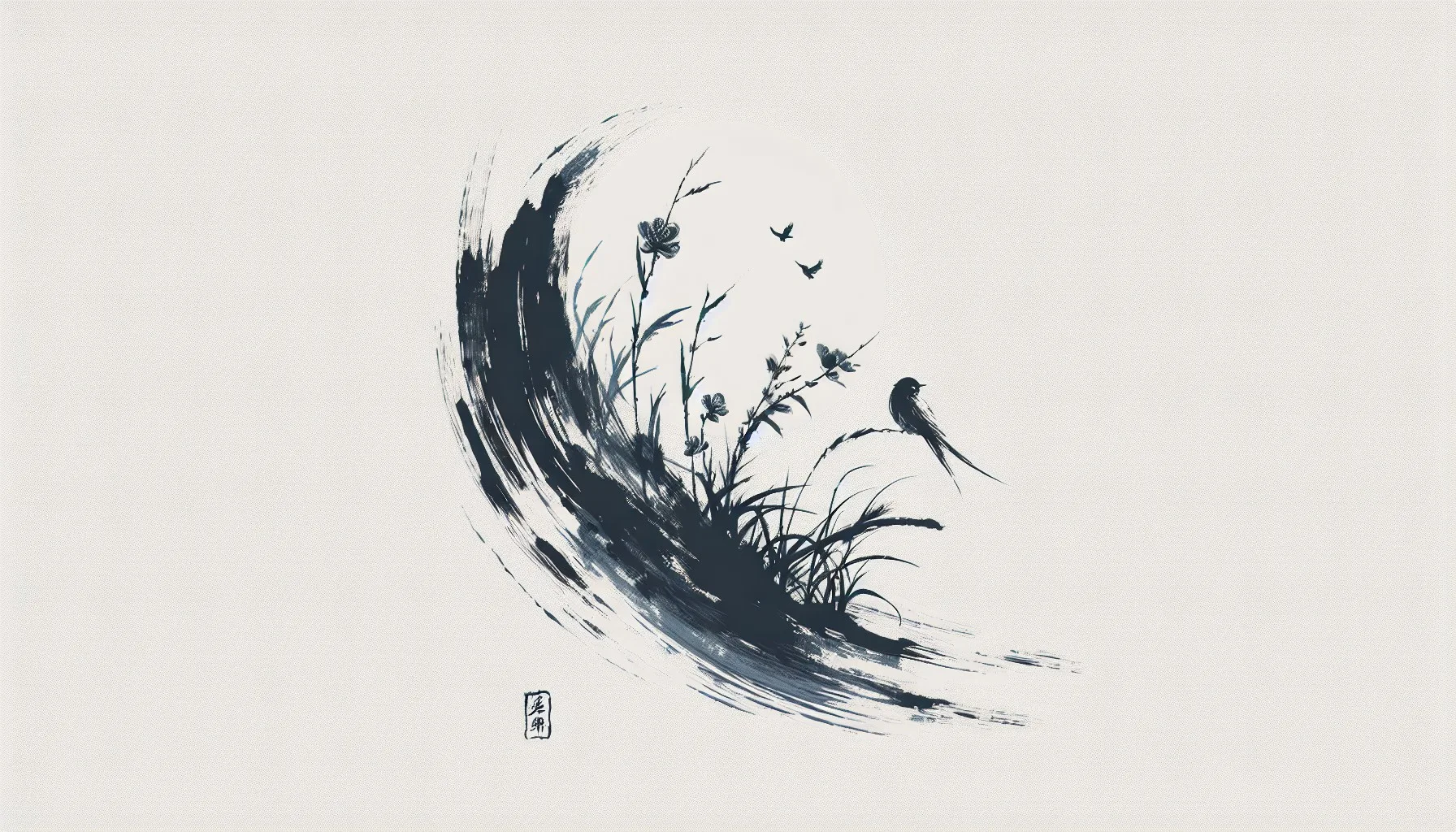Understanding Emotional Attachments
Breaking up is tough, no doubt about it. But when it’s time to cut ties with old attachments, getting a handle on those emotional tugs becomes a biggie. Often, the sway they hold isn’t even on our radar until it sneaks up on us.
Impact of Negative Attachments
Ever felt like you’re trudging through mud? That’s what negative attachments can do—sap your energy and keep you in a fog. Instead of enjoying life, you end up trapped in a loop of pain and “what ifs.” It’s like trying to run with a ball and chain around your ankles. Medium talks about how these attachments can choke out happiness and keep you from living your best life.
| Stuck In the Past | What It Feels Like |
|---|---|
| Emotional Turmoil | You’re in a cloud of gloom and doom that wrecks your day. |
| Happiness Blockage | New joys and experiences just can’t break through. |
| Energy Drain | Feel spent from constantly wrestling with those downer vibes. |
Benefits of Letting Go
Ever felt light as a feather? It happens when you cut loose from those old chains of attachment. Ditching them lets you tap into your true self, heightening intuition and forging deeper connections. As Medium points out, when those old hang-ups slip away, you suddenly see things clearer and life just feels, well, easier.
What do you get when you let go? Oh, just a better life:
- Personal Growth: You ditch the old baggage and find out who you really are and want to be.
- Boosted Resilience: Learn to roll with life’s punches and come out stronger than ever.
- Better Mood: Kiss emotional seesaws goodbye and say hello to inner calm.
Ever looked at old photos and felt all those emotions flood back? Being aware of how memories play tricks on us helps us choose—or not choose—to revisit those chapters. Psychology Today digs into using this memory trick to handle our highs and lows better.
By learning to move on, we can open the door to healing and find that peace we all crave. If you’re curious to dig deeper, check out our guides on how to release past relationship baggage and finding closure after breakup.
Recognizing Attachment Styles
Figuring out our attachment styles can really shed light on how we deal with letting go of past relationships. When it comes to picking up the pieces after a breakup, knowing how our attachment styles shape our emotions and actions can make a big difference. Let’s take a close look at the two main styles: dismissing attachment and preoccupied attachment.
Dismissing Attachment Style
Folks with a dismissing attachment style tend to back off a bit emotionally from past relationships. They often play down how crucial those emotional bonds are and might even admit to forgetting a lot about their past relationships and feelings. Researchers have noticed that people with this style often don’t recall much from their childhood, as if they’re just tuning out negative social stuff altogether (Psychology Today).
Having a dismissing attachment style often starts with growing up in a place where emotional support was in short supply. That upbringing makes them lean more into self-reliance rather than getting close to others. Comprehending this style can clue us into how we might ghost emotional healing after a breakup.
| Trait | Description |
|---|---|
| Emotional Connection | Not keen on forming deep emotional ties |
| Memory Recall | Struggles to remember relationship-related stuff |
| Coping Mechanism | Self-reliant, ignores emotional aches |
Preoccupied Attachment Style
Then there’s the preoccupied attachment style, where anxiety in relationships is like the elephant in the room. Folks with this style crave closeness but are terrified of being left behind, causing them to swing between insecurity and clinginess. This can totally mess with their ability to move on post-breakup, stirring up obsessive thoughts about an ex and intense feelings triggered by any little reminder.
Preoccupied individuals often wrestle with self-worth and are on a near-constant quest for validation from partners. They latch on hard, making it tough to emotionally untie themselves after splitting up, acting like a roadblock to moving forward.
| Trait | Description |
|---|---|
| Emotional Connection | Thirsty for intimacy and closeness |
| Memory Recall | Super vivid memory of relationship details |
| Coping Mechanism | Clingy and scared of getting ditched |
Pinpointing whether we’re leaning towards a dismissing or preoccupied attachment style can help us pull back the curtain on patterns that might be slowing our healing. By getting to know these styles, we can take steps that actually help with moving on from an ex and getting our emotional groove back. This self-awareness is key as we push through the post-breakup recovery process and try to nail practices that support emotional health.
The Psychology of Memories
Present-Day Effects of Past Events
Our memories, little tapestries of the past, wield a mind-boggling sway over how we live now. Cool, right? Well, maybe not always. Think about it: remembering a cringe-worthy moment or that time things went south can make us feel upset all over again. Scientists tell us our brains aren’t just playing tricks; those strolls down a not-so-fun memory lane can mess with our bodies too—like making your heart race or giving you the nervous sweats (Psychology Today).
Unlike that mysterious sock thief in the dryer, unpleasant memories don’t just vanish. They have a sneaky way of sticking around, especially when we’re not in a great mood. You gotta admit, it’s a drag that we’re more wired to pull up bad stuff than good vibes, turning our noggins into a highlight reel of doom on repeat.
Recalling Negative Memories
Dive right into gloom city, and suddenly, your brain does a backflip into the negative Olympics. Doesn’t it feel like when we’ve hit a low, those pesky past dramas won’t quit? It’s a vicious cycle, where sadness compels us to revisit memories better left in the memory attic. Each time we replay them, they latch on tighter, drawing connections with every other lousy experience like they’re best buds at a reunion you didn’t RSVP to (Psychology Today).
Gaining some savvy on how memories do their thing can kickstart our healing journey. It’s like realizing the haunted house wasn’t that scary after all, just a few mirrors and shadows. When we buy ourselves a ticket out of this mental funhouse, we start making room for the sunshine—we manage our emotions better and, perhaps, finally smooth over those relationship bumps. Ready for a little less rain cloud and a bit more sunshine? Check out our guide on how to heal after a breakup for some practical advice on bouncing back.
Early Life and Attachments
Importance of Caregiver Bond
The connection we establish with our primary caregivers when we’re just little tykes plays a big part in how we handle emotions later on. This special bond, as brain-whiz John Bowlby explained, kicks off our journey into social interaction and learning. If you’re curious, check out Mentally Healthy Schools.
When caregivers respond to us with love and attentiveness, they infuse our young hearts with a sense of safety and calm. Kids who grow up with this kind of security often turn into adults who trust and handle emotions like pros. On the flip side, if caregivers are a bit unreliable or absent, well… it can leave us feeling a bit shaky in relationships later on.
Effects of Insecure Attachments
Not having that early connection groove with caregivers can make life feel like an emotional rollercoaster even as we grow up. Kids missing out on steady love might find their self-esteem and emotions taking a hit, leading to all sorts of hurdles down the line. Read more on that from Mentally Healthy Schools.
For grown-ups, these attachment hiccups can look like trust issues, being clingy, or wanting to keep everyone at arm’s length in romantic connections. And don’t even get us started on how tough these make breakups—ugh!
Knowing your own attachment style can be a game changer, especially when you’re trying to untangle past relationship baggage. Realizing how those early days shaped us can help pave a path towards mending and rebuilding self-esteem, while learning healthier love habits. Let’s face it—we all need that!
Healing Through Letting Go
When heartaches hit us after a breakup, there’s a big ol’ inner struggle, trying to wave goodbye to those pesky old attachments that cling on for dear life. We gotta get comfy with the idea of dropping what’s dragging us down and picking up new tricks that help us finally cut those strings.
Process of Releasing Attachments
Letting go isn’t just about clearing space; it’s about breaking free and finding peace. Plus, it does wonders for how we connect with people and even hones that little voice inside our head. Here’s the lowdown on cutting ties and moving forward:
-
Acknowledge and Accept:
First things first, we need to face the music. It’s about nodding to our feelings and those lingering ties from past flings. Accepting them is like saying, “Hey, it’s okay,” without any finger-pointing. -
Mindfulness Practice:
Stay in the present, folks! It’s a nifty way to spot old ties and decide if they’re worth holding—or chucking (Medium). -
Release Old Patterns:
Old habits die hard, but we get there by letting emotions drift away like clouds. As these patterns vanish, things get clearer and simpler (Iowa Source). -
Reflect on Memories:
Rewinding old tapes in our heads can control us, but figuring out when to hit play or stop gives back our power over how we react (Psychology Today).
Practicing Detachment Techniques
Detachment isn’t about being stone-cold; it’s a smart way to grow our awareness and stay mindful. Here’s how we can loosen up:
-
Journaling: Scribbling down our thoughts gives us a peek into what sticks around and what should hit the road.
-
Meditation: A little meditation can ground us right where we are, helping us shed those pesky past shadows.
-
Affirmations: Giving ourselves a regular pep talk transforms our mindset, moving us from clingy to empowered.
-
Therapeutic Practices: Yapping with a therapist or counselor lets us dig into our emotional vibes and back us up in breaking free.
Doing these things inches us closer to peace and a sense of being real. For more ideas, check out how to release past relationship baggage or the healing process after breakup. These nuggets can help us better understand and handle that emotional maze of letting go.
Building a Support System
Getting the right support when we’re piecing ourselves back together after a breakup is game-changing for letting go of those old attachments and stepping into a brighter future. It’s like having a safety net that catches us as we bounce forward, improving our emotional health and drive to live our best lives.
Seeking Professional Guidance
Talking to a mental health pro isn’t just like having a friendly chat; it’s a powerhouse move for us. Therapists and counselors can offer us wisdom nuggets and coping strategies that hit home. They’ll get into the nitty-gritty—think attachment styles and old grudges from past loves gone sour. Once we really get how we tick (like whether we push people away or cling on for dear life), we can break out of these emotional loops that hold us back.
Working with a pro, we can figure out how to step back a bit, mentally, from past relationships. It’s about learning to see ourselves for who we are, not who we were with someone else. Thanks to stuff like mindfulness, we can snag some inner peace and authenticity along our healing path.
Creating a Supportive Environment
Besides the professionals in our corner, being around positive, understanding folks makes a whole lotta difference. Friends and family who get us and cheer us on can be the real MVPs in our comeback stories. Having that buddy who’s willing to listen or hit up a yoga class with us can really boost our healing vibe.
To make our support circle as strong as it can be, we might wanna try:
| Action | Purpose |
|---|---|
| Jump into a support group | Chat with people who are in the same boat |
| Dive into positive activities | Pour our energy into stuff that makes us smile |
| Draw lines with toxic folks | Make room for healthier relationships |
Setting up this kind of environment keeps our eyes on the prize and helps us wave goodbye to whatever’s holding us back. Looking for more ways to let go of past ties and move on? Check out our other reads on letting go of past relationship and how to detach from ex-partner.




